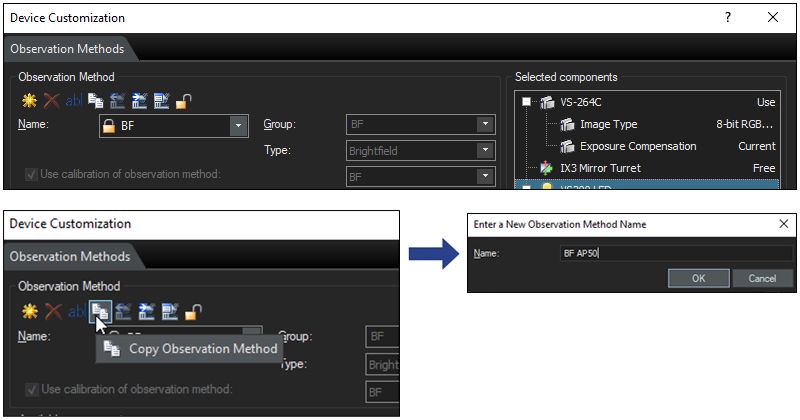Advantages of Using the SLIDEVIEW™ VS200 Slide Scanner’s Motorized Condenser to Adjust Specimen Contrast
Controlling Sample Contrast
In optical microscopy, the aperture diaphragm can be used to control resolution and contrast since varying the size of the diaphragm opening changes the illumination cone projected into the objective. Correctly adjusting the condenser aperture diaphragm is critical for obtaining high-quality images because it controls the numerical aperture, resolving power, depth of field, and the overall image character.
There are two ways to control the amount of light hitting a sample—adjusting the condenser diaphragm or changing the amount of power going to the light source.
Below is an example of an H&E-stained mouse liver specimen acquired using a 40x UPlanXAPO (NA 0.95) objective on a VS200 slide scanning system at different condenser diaphragm settings.

These images demonstrate that—from left to right—opening the condenser diaphragm causes the images to lose contrast but gain resolution.*
The VS200 system is equipped with an Olympus BX3-UCD8A (NA 0.9) motorized universal condenser, enabling the aperture to be easily controlled. Using the system’s software, the aperture can be adjusted from closed to fully open in 1% increments. The system automatically makes these adjustments, depending on the objective’s magnification and numerical aperture (NA).
As a standard value, the VS200 system uses an aperture diaphragm opening that’s 75% of the objective’s NA. The higher the NA of the objective, the wider the opening of the diaphragm. It is possible to create a new observation method (OM) where the setting for the aperture diaphragm is, for example, 50% of the objective’s NA.
To do this, open the VS200-ASW software and go to ‘Device Customization.’ Make a copy of the BF observation method and name it.

Finally, set the value for the aperture diaphragm (BX3 Aperture Stop) and save the observation method.

Note: changing the aperture diaphragm may impact the shading correction for the new brightfield observation method.
Calibrate the shading correction separately for the new observation method.
Application Example:
The Papanicolaou test, abbreviated as Pap test, is a cervical screening method used to detect potentially precancerous and cancerous processes in the cervix.
The human Pap test sample in these images is stained with Hematoxylin, Orange G6, and Eosin. The images on the left were captured using a 75% diaphragm opening and the images on the right were captured using 50% diaphragm opening. The images show that the smaller diaphragm opening enhanced the sample’s contrast while slightly reducing the resolution.

Images scanned with a UPlanXAPO 20x objective, 0.8 NA. scanned with standard aperture diaphragm setting (opening 75%) and scanned with aperture diaphragm opening of 50%, which enhances the contrast with a little a minimal loss of resolution.
Conclusion:
The VS200 system’s motorized, adjustable aperture diaphragm provides users flexibility to get the best out of their samples, especially if they are very faint or lacking contrast. This can be applied to hematological samples as well as weakly stained immunohistochemical (IHC) stained slides.
* For more information about the aperture diaphragm and how it is used, visit:
www.olympus-lifescience.com/en/microscope-resource/primer/java/kohler/contrast
Products Related to This Application
was successfully added to your bookmarks
Maximum Compare Limit of 5 Items
Please adjust your selection to be no more than 5 items to compare at once
Not Available in Your Country
Sorry, this page is not
available in your country.